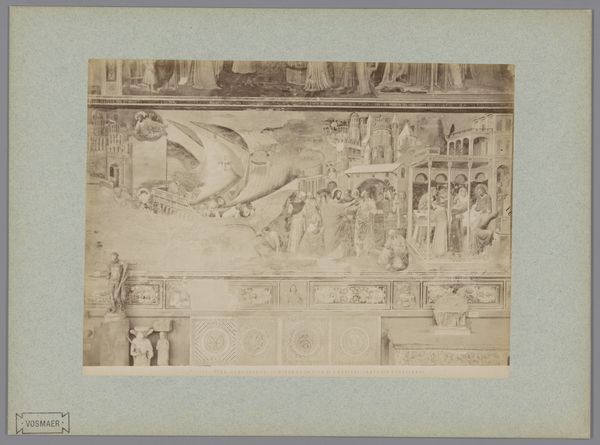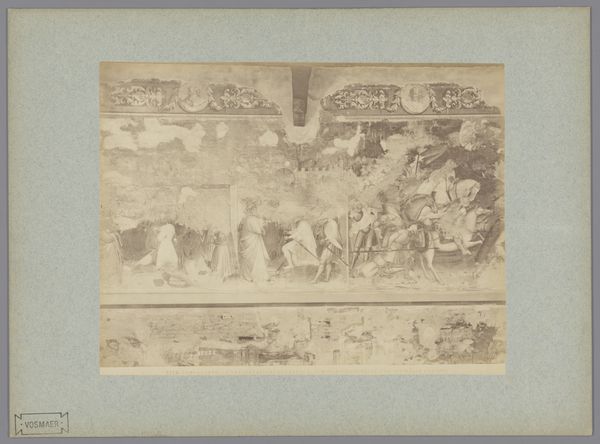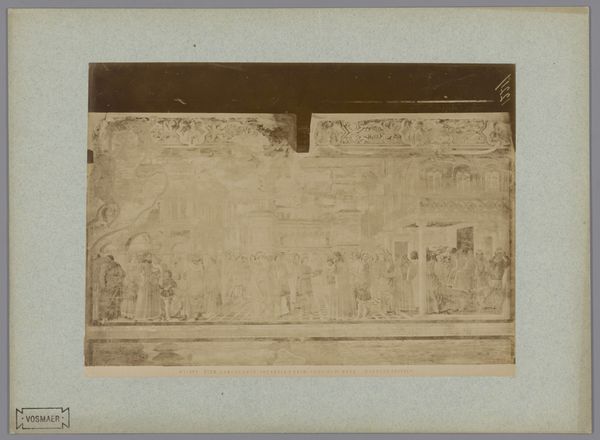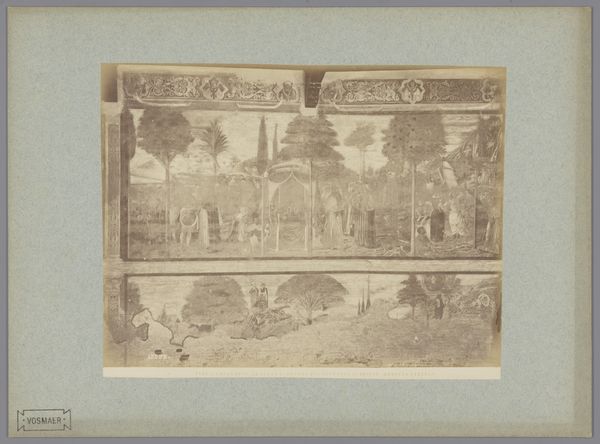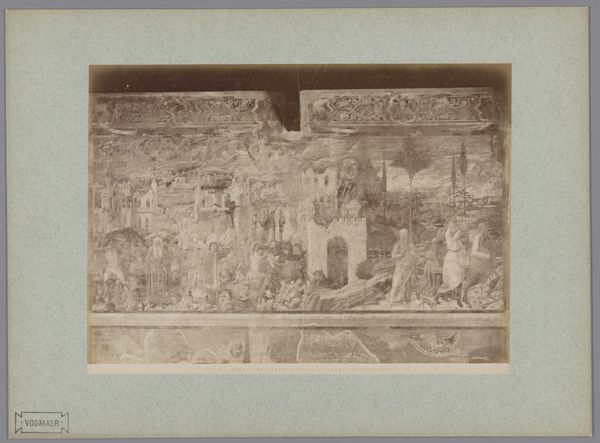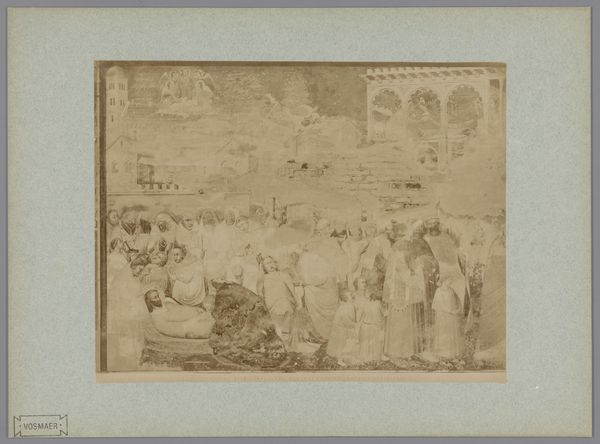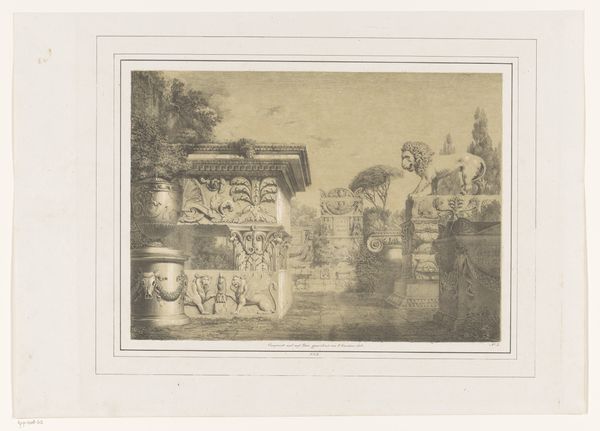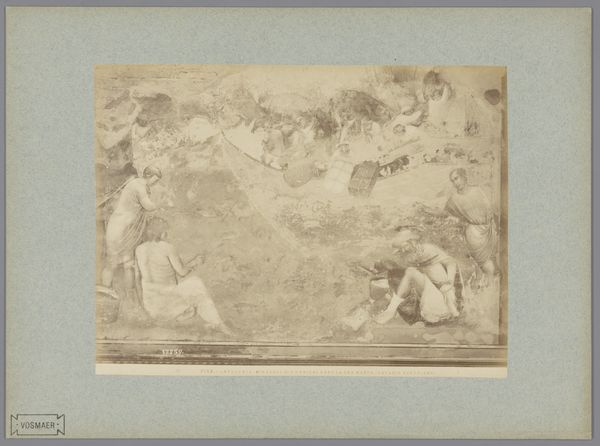
Fotoreproductie van het fresco De vervloeking van Cham naar Benozzo Gozzoli in het Camposanto te Pisa, Italië 1857 - 1900
0:00
0:00
print, fresco, photography, gelatin-silver-print
#
portrait
#
photo of handprinted image
#
aged paper
#
toned paper
#
homemade paper
#
narrative-art
#
muted colour palette
# print
#
landscape
#
fresco
#
photography
#
gelatin-silver-print
#
history-painting
#
italian-renaissance
Dimensions: height 192 mm, width 250 mm, height 261 mm, width 353 mm
Copyright: Rijks Museum: Open Domain
Editor: This is a photograph of a fresco, "The Curse of Ham," by Benozzo Gozzoli, taken sometime between 1857 and 1900 by Fratelli Alinari. It's got this beautiful, sepia tone that gives it such a sense of history, but also, I have to admit, I don’t really know what is going on. What do you see in this piece? Curator: I see a reproduction, a layered representation if you will, which opens interesting dialogues around the themes it depicts. Consider the original fresco. Gozzoli was commissioned to create this scene, which derives from the biblical story where Ham, Noah's son, disrespects his drunken father and is subsequently cursed. Now, think about the socio-political context. How does the artist's interpretation of the biblical narrative play into societal hierarchies and justifications for inequality? Who benefits from this narrative? Editor: So, the image isn't just a story; it's a reflection of the power dynamics of the time? Curator: Precisely! The photograph by Alinari adds another layer. It transforms a grand, public fresco into a portable image. Consider how the Alinari brothers operated in a Risorgimento Italy; their photography helped establish and disseminate ideas about the Italian cultural identity, didn't it? Did they use photography as a means of legitimizing a particular vision of the past, while quietly marginalizing alternative interpretations? Editor: I hadn't thought about it that way. I was focusing on the age of the image itself but you are looking at what's behind the image... whose voices are amplified, and whose are muted? Curator: Exactly! It challenges us to investigate not only the aesthetic value but also the social and historical implications of the artwork, prompting critical engagement with the power structures it represents. It is an early example of the photographic dissemination of fine art… How does that alter our understanding? Editor: This has really changed how I view historical art. It's not just about aesthetics or skill, but about the stories being told, and *who* is telling them and why. Curator: Yes! Considering the layers of context embedded in the work truly enrich the narrative. It’s an act of cultural preservation but also a re-interpretation through photography, making it essential for us to ask questions about its role and legacy.
Comments
No comments
Be the first to comment and join the conversation on the ultimate creative platform.

